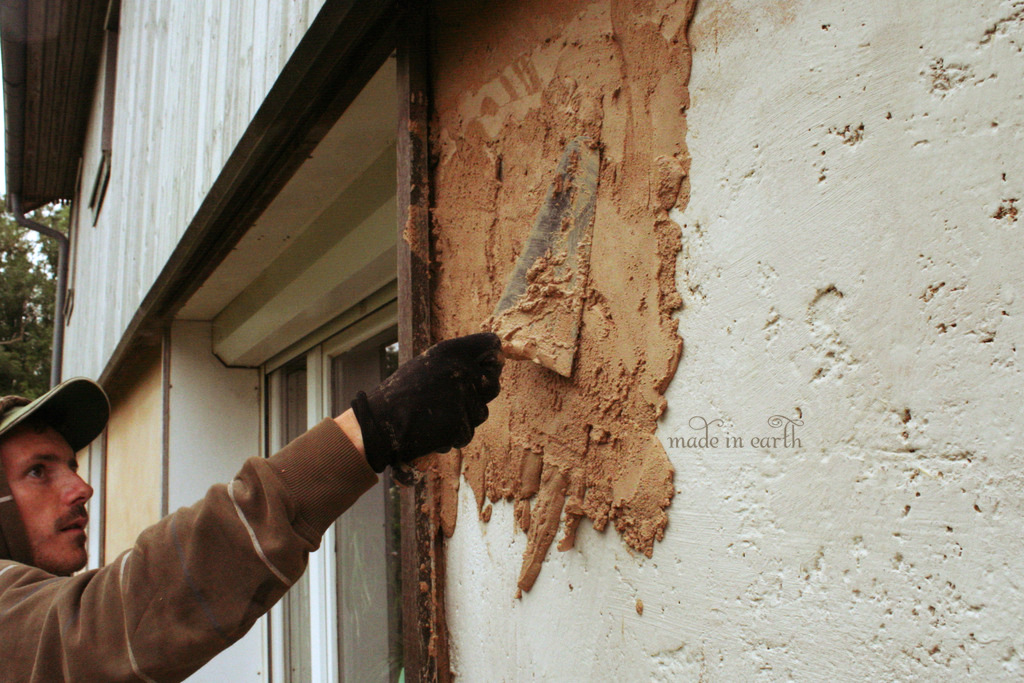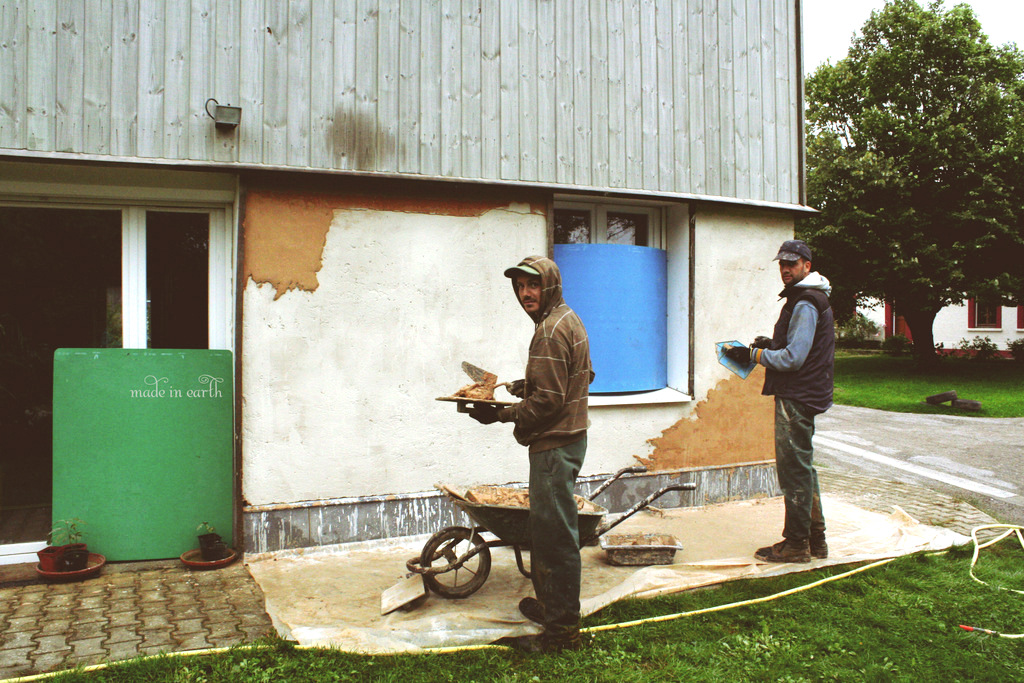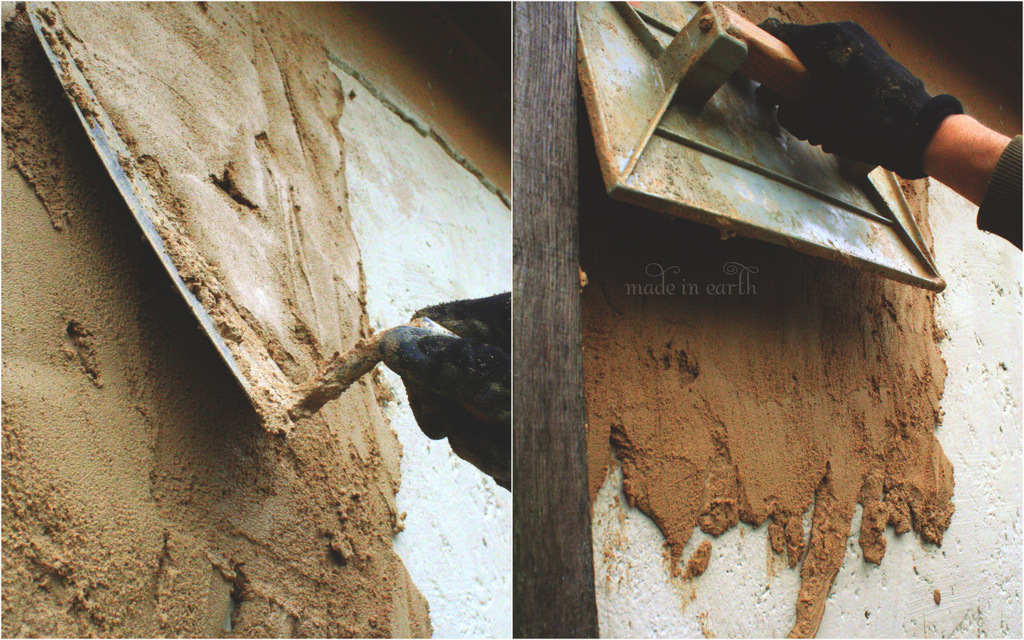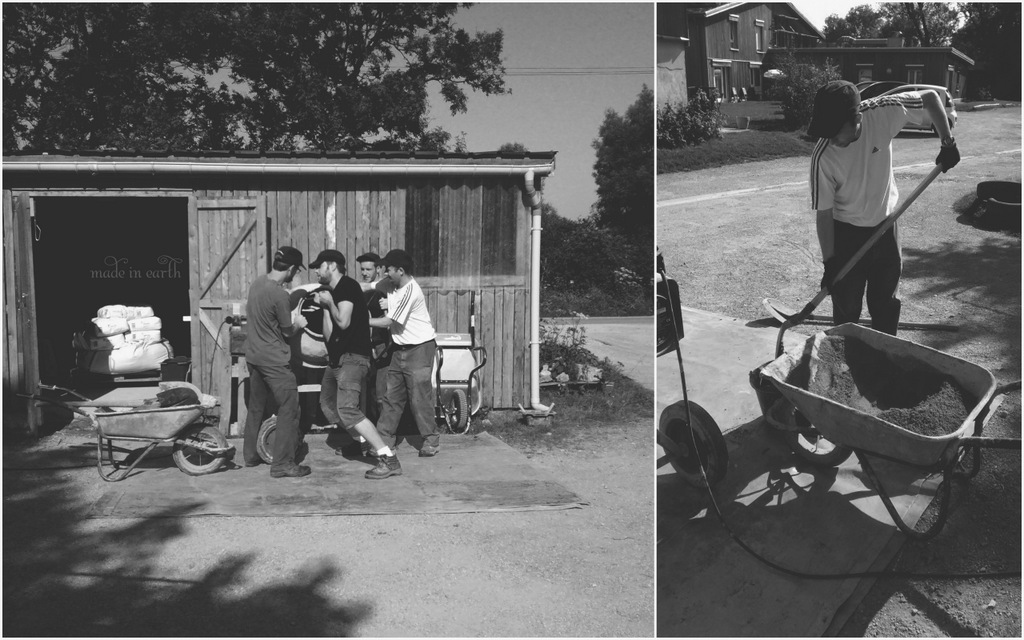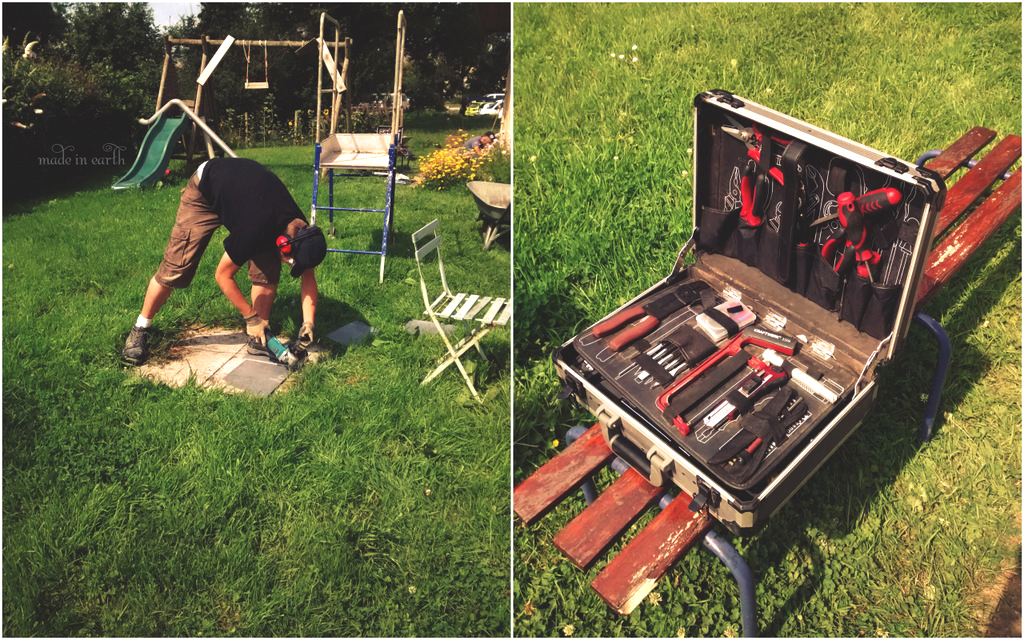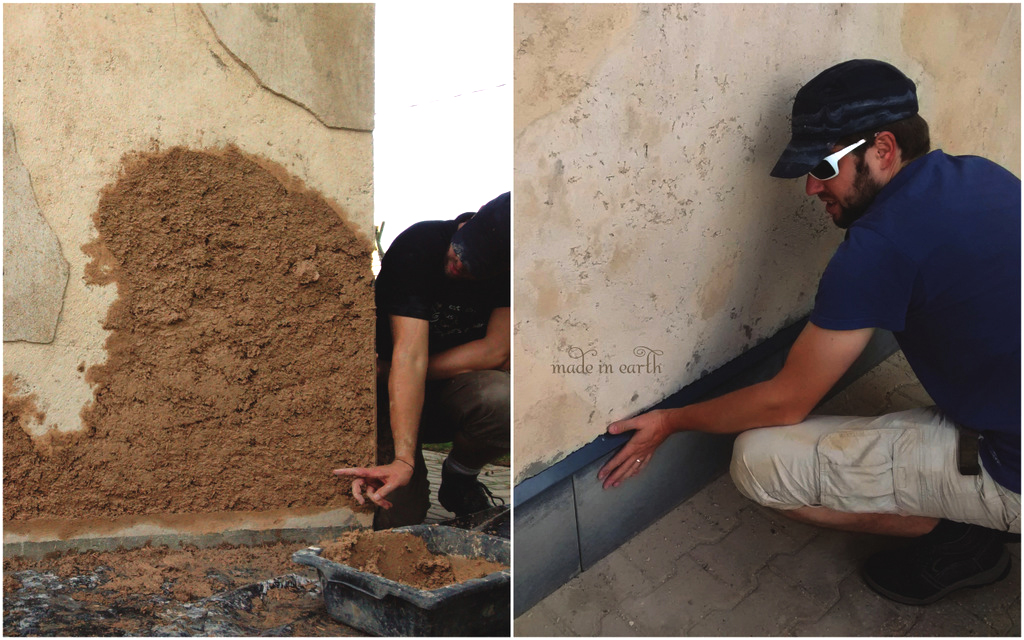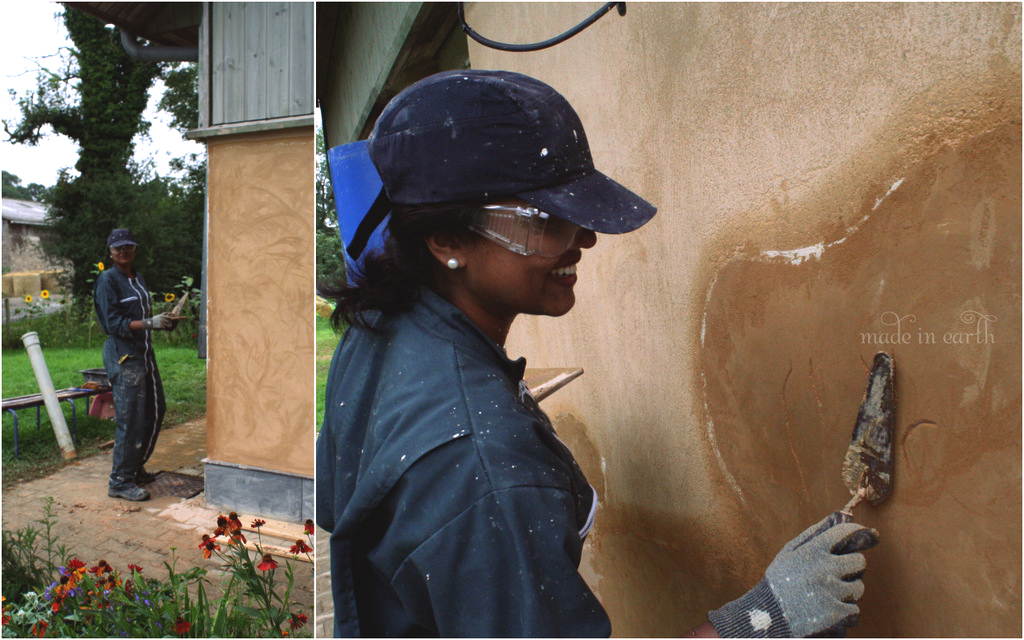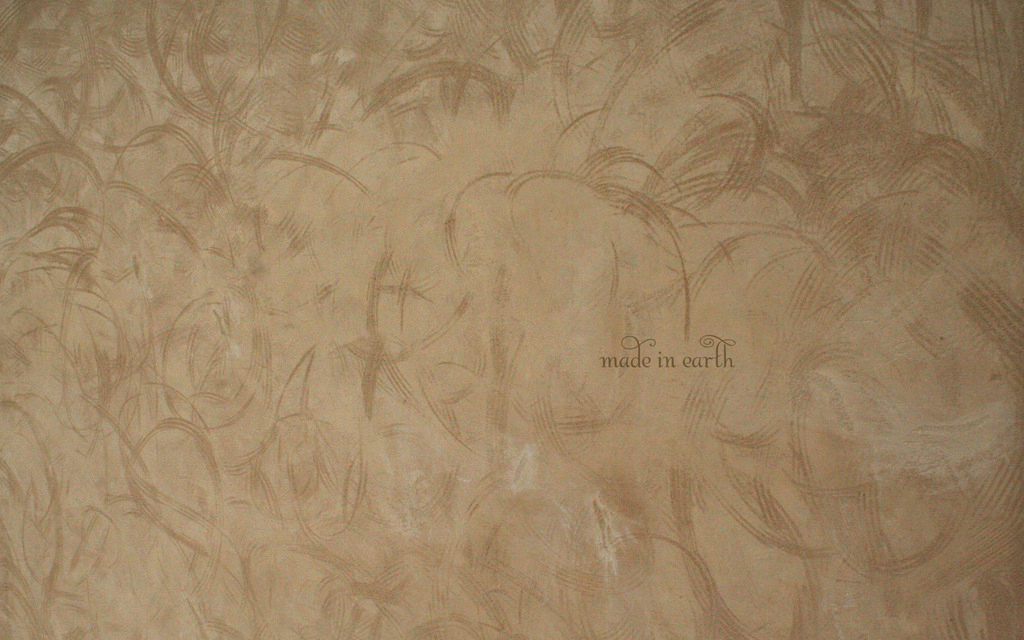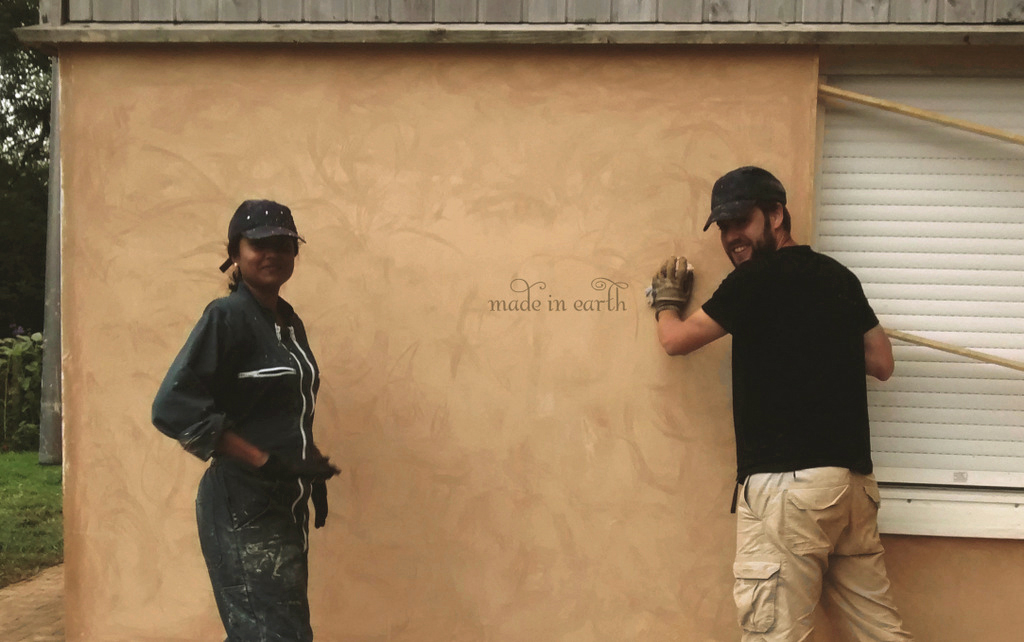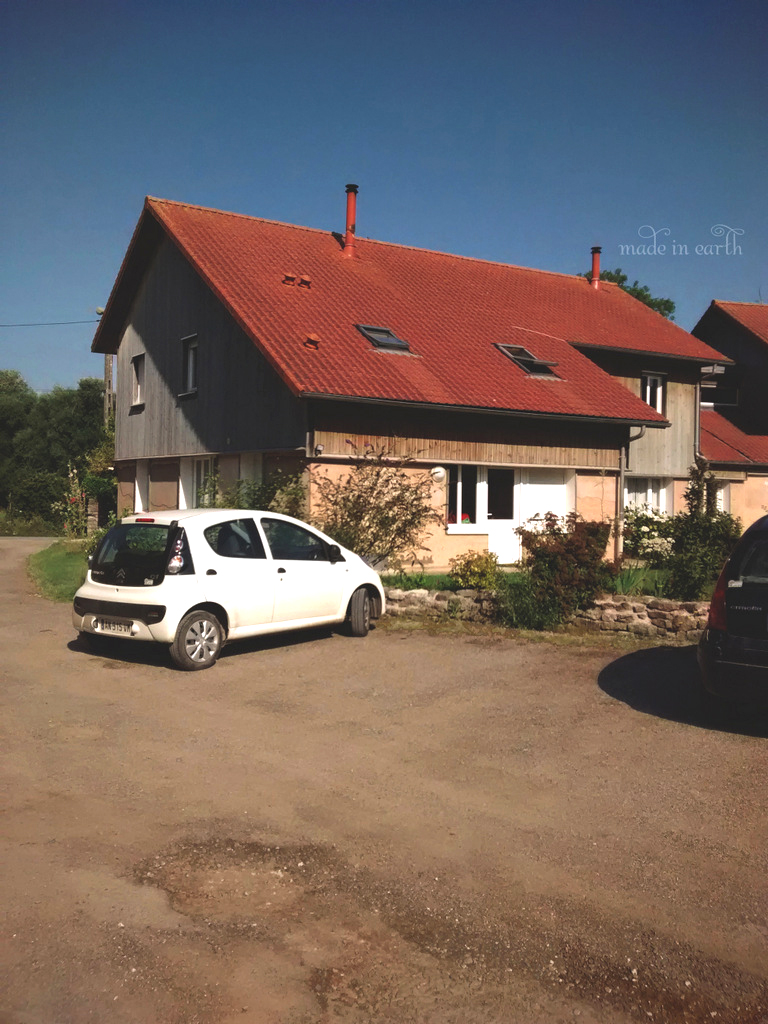In the summer of 2014, the community homes at Chênelet in the North of France, received a make over. Our 10 day mission was to coordinate and train a team of 6 employees from Chênelet to restore 80 sq metres of plastered earth walls.
Hidden in the countryside of Nord-pas-de-Calais, Chênelet is an association that supports unemployed people and persons from socially difficult backgrounds to train in areas of their interest. Their training period usually lasts from 6 months to 2 years. Thanks to the work and access to basic needs, they are able to regain their dignity and their place in society. After their training period, they find employment in the regular sector and sometimes even start practices of their own. Through this objective of employment and training, Chênelet has developed activities that create an integrated value chain in the region : organic farming, forestry, processing of the local raw materials (timber, organic fruits, vegetables) and construction of ecological social housing with the use of local building materials like timber, earth and residues from the mining industry.
[Benjamin and Amin work together on the west facade]
The 6 trainees we worked with this summer were interested in moving forward with their career in the building sector. They received a week-long training in earth plastering techniques at the site of the Chênelet homes.
The walls of these houses are insulated with a mixture of lime and wooden chips which is protected with 2 layers of plaster. The first thick layer is made of linen/flax plant straw, lime, earth and sand that creates a support to receive the next layer.
The second layer is the “finishing”, that protects the wall from rain and shocks. After 15 years, it is this layer that required a “face lifting”.
The tough weather conditions in this region of the North made it necessary for us to use a considerable amount of lime in the plaster. We used a mix of NHL 3.5 lime, earth and fine river sand, to obtain a smooth finishing layer of 5mm.
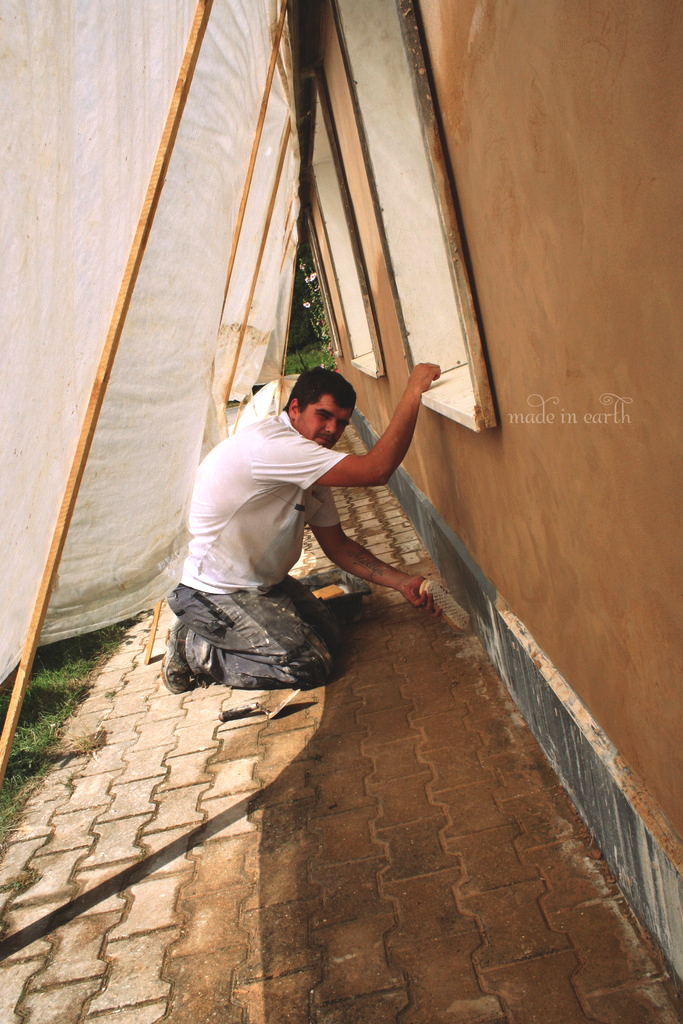
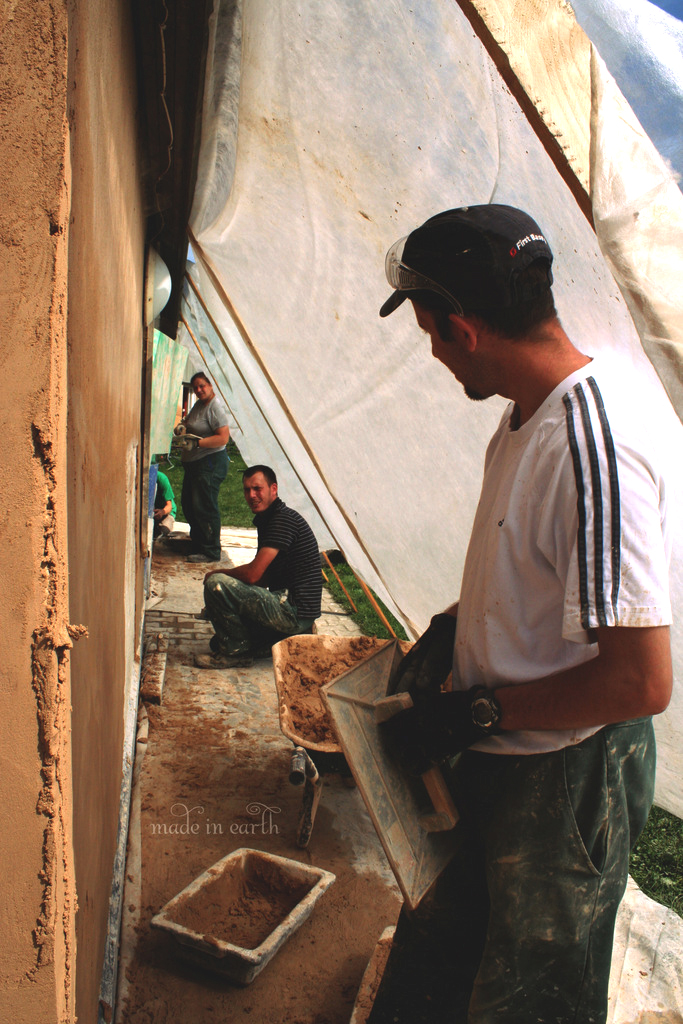
[In July the sun was surprisingly hot in “Pas-de-Calais”, we had to work under a shade net to make sure that neither us nor the plaster dry too fast!]
We had to redo the first layer in some patches with linen/flax plant straw mix. To ensure durability, we decided to protect all the houses with stone tiles which we placed at the bottom before putting the finishing layer.
[A nearly finished wall surface of the south facade, the beautiful waves show the movement of the hands while preparing the layer]
Those 10 days were intense!
All the 6 participants worked with earth for the first time, they had only worked with conventional building materials before like cement and sand. We were amazed to see how quickly they caught the technique; ” It is not the same! It is much more soft!”, ” It feels more natural” , “It is a forgiving material”. Everyone felt that working with earth was much easier, pleasant and non-toxic as compared to cement plastering.
A great team spirit grew over the weeks and they were all very enthusiastic about what they had learnt, eager to share and spread this interest in the companies that they will join later!
A plaster that breathes, regulates temperature and humidity inside the building, absorbs both noise and odors and that ages beautifully with time. Add to that the infinite possibilities in aesthetics; Coloured or Natural, smooth or grainy, regular or patterned, contemporary or rustic; earth plaster is irresistible! The method is simple and fun, you can even do it yourself!
We will leave you with a photograph of a beautiful Chênelet home in the sun.
Handmade with care, handmade in earth.

